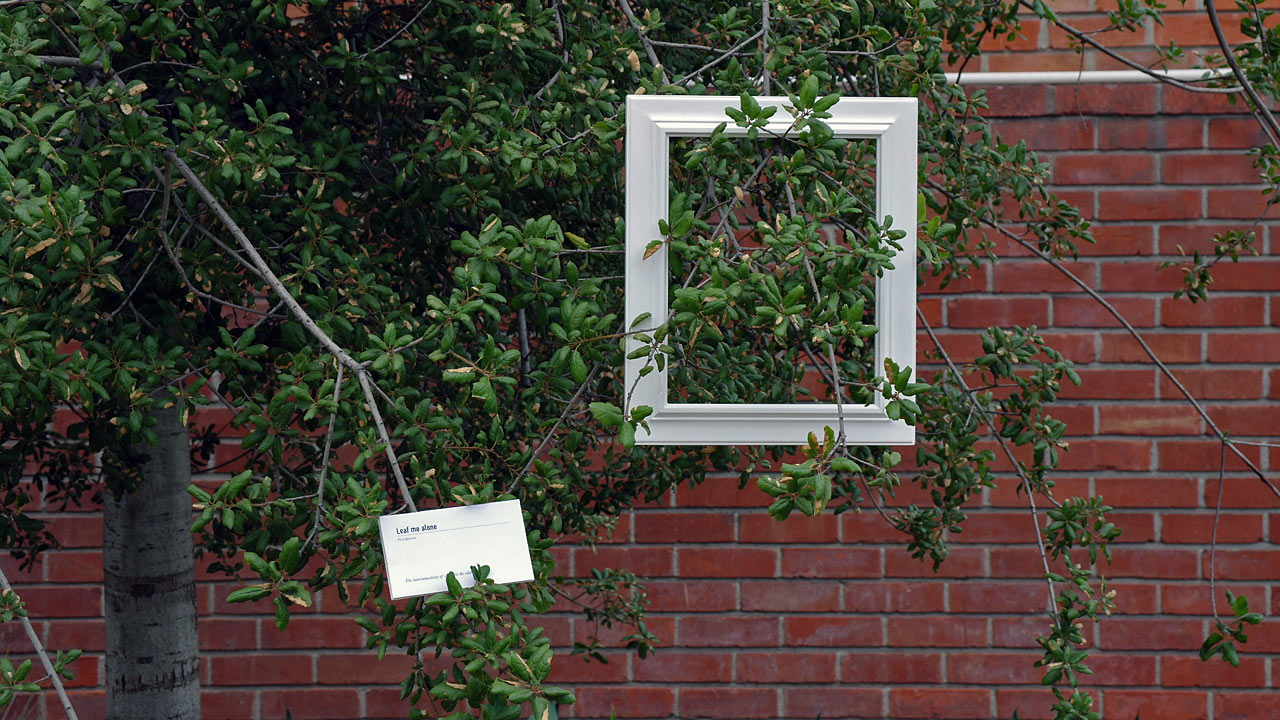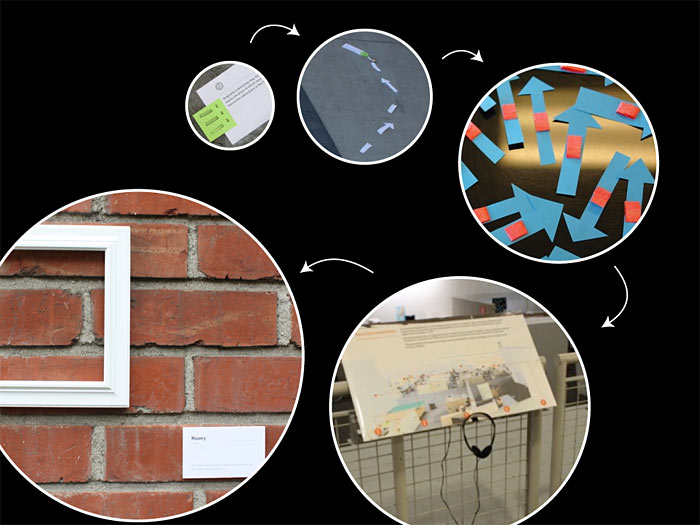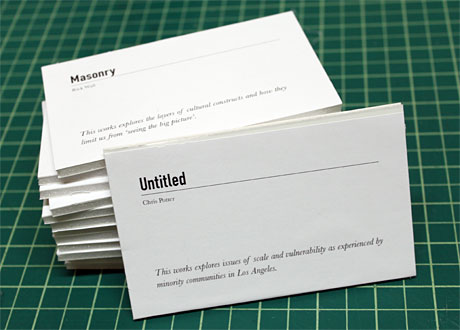
Framing Public Spaces
- Context:
- Academic Project
- Date:
- Launch:
Experimental Intervention #2 : A Scenic Route
Creating scenic routes to highlight everyday and overlooked objects and places
Brief
Use combinations of high- and low-tech objects, materials and devices to create three site-specific interactive interventions in everyday places in and around Art Center.
This project was developed in collaboration with JiSu Choi and Annie Needham
Process
For this project, we wanted to create scenic routes highlighting everyday objects and overlooked blemishes.
From very quick and rough iterations, we developed and refined the interventions over the course of a number of weeks.
One version of the project involved creating an audio tour and visual guide about the fictional inhabitants of the Wind Tunnel.

Our final iteration, was extremely successful. Placing a large number of frames and museum labels on unimportant objects in the public walkway beside Fillmore station, we created a spontaneous exhibition of the unnoticed.
The descriptors were written to correspond to the objects they labelled with puns and word plays. This simple unexpected delight meant that some passers-by became engaged in searching out every last frame to read the description beside it.
This video captures how successful the final version of this project was in capturing the attention of passers-by .
We mounted a large number of frames and museum-style descriptors throughout the space.

Reflections
For me, this would be an interesting project to take further through refining what we are drawing attention to and how we are doing it through this reframing of public spaces.
Our experiences in all three parts of this project, highlighted to me the power of framing. When context is altered, even slightly, the results can be powerful. This project illustrates this in quite an obvious manner, but as the other experiments developed, I experienced the same concept at work. I had not thought of a story as a framing device before—but I was struck by how stories can be used to frame objects or situations in completely different lights.
